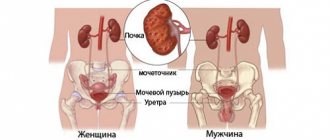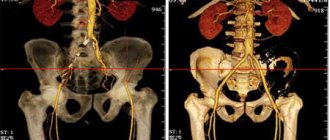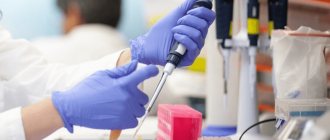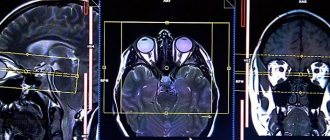CTI is a laboratory urine test that is performed to determine whether a person has used narcotic or toxic drugs. In addition, based on the results of the study, it is possible to determine the type and amount of the substance that caused the poisoning. State hospitals do not carry out CTI analysis; samples are taken in specialized toxicology clinics.
Features of analysis
Clinical diagnostic laboratories located in medical institutions do not have the means for preliminary testing of urine for psychoactive substances.
Determination of their presence is carried out in chemical and toxicological regional laboratory centers equipped with special automatic devices and sets of reagents for enzyme immunoassay, radioimmunoassay and immunofluorescence techniques.
During the chemical-toxicological study of urine, two types of screening are performed.
A preliminary test is a qualitative method used to identify intoxicants in a sample of biological material. The study is performed in a rapid manner using thin-layer immunochromatography.
The result will be ready in a quarter of an hour; using this technique you can recognize the following series of psychoactive substances:
- alcohol;
- amphetamines – Methamphetamine, Ecstasy;
- cocaine;
- barbiturates – Phenobarbital, Barbamil, Cyclobarbital;
- benzodiazepines - Diazepam, Relanium, Nitrazepam;
- opiates – morphine, heroin, Codeine;
- cannabinoids – marijuana, hashish;
- opioids - Tramadol, Phenycyclidine, Methadone.
Confirmatory analysis is a control quantitative study that allows you to determine the concentration of the desired substances. To carry it out, more specific methods are used, based on physical and chemical principles:
- high performance liquid chromatography;
- gas-liquid chromatography;
- gas chromatography-mass spectrography.
The screening period is four days.
The choice of analytical technique is determined by a qualified toxicologist chemist based on the circumstances of the examination.
Is it possible to cheat a laboratory test?
There are different ways to cheat:
- You can replace your biomaterial with the urine of a donor who has not used prohibited substances. But you need to submit the urine to the laboratory yourself. Drugs can evaporate from urine if the liquid is left in the open air for 2-3 hours. After this, the data in the urine test will be inaccurate.
- It is also possible to speed up the body's metabolism. To do this, you need to drink a lot of fluid 1-3 days before the test.
It is important to remember that replacing a chemical-toxicological analysis entails criminal liability. It is better to undergo analysis in specialized clinics to avoid possible errors in the results of the study.
Who is tested for psychoactive substances?
This procedure is carried out:
- applicants to secondary and higher educational institutions;
- students of military departments;
- for registration of migration documents for citizens of the Russian Federation traveling outside its borders;
- during a medical examination of those responsible for road accidents for alcohol or drug use;
- children whose parents allow them to use drugs;
- workers of decreed professions (subject to mandatory medical examination) - departmental escort, civil and military aviation, railways, drivers, individual security guards.
CTI, which detects the presence of psychotropic, narcotic drugs and their metabolic products in the body, as well as an examination by a narcologist to obtain a weapons license, is carried out at the expense of the citizen who draws up these documents
When is the test scheduled?
The reason for verification may be various situations, in particular:
- entry into a certain position (security guard, public transport driver);
- admission to an educational institution (university, institute, college);
- in the event of an accident, if it is revealed that the culprit of the accident was under the influence of drugs or alcohol;
- children found to be using drugs;
- students studying at the military department;
- servants of departmental institutions;
- when applying for a visa to travel abroad;
- during the trial, if it is revealed that at the time of the commission of the unlawful act the defendant was under the influence of alcohol or drugs.
Features of urine testing
The simplest method to prove that a person is actually using drugs is a urine test. Urine is capable of preserving the prohibited form of drugs for six days after taking them.
The principle of the method is that the test sample is absorbed into the adsorbent device of the dough components. If the desired substance is present in the biological fluid, the immune antibody interacts with a specific antigen applied to the strip strip.
In its test zone, results from 1 to 5 are indicated, if during the test a red mark did not appear on the strip - this indicates that the saturation of the toxic substance does not exceed the threshold limit. In this case, the specific antigen immobilized in the test zone reacts with other antibodies - a pink mark appears.
A positive result of a urine test is considered to be the appearance of one pink line in the test zone - this indicates the presence of a psychoactive substance in the biomaterial sample; with a negative result, two pink lines appear on the test - evidence of the absence of detectable substances.
CTI can also be performed using express methods
What is CTI analysis?
Chemical-toxicological examination of urine is a complex process of detecting narcotic, psychotropic, toxic substances that cause poisoning. Almost all substances consumed by humans can be determined using CTI analysis.
All substances that a person took for 3-5 days are absorbed in the liver and excreted by the kidneys. During the process of processing by the body, some foreign elements settle in urine. Traces of the use of narcotic and toxic drugs can be detected 6-8 hours after taking.
Principle of collecting biological material
The main condition for accurately detecting a psychoactive substance and determining its type is the promptness of taking a urine sample from the patient. This means that the reliability of the results depends on the minimum period between the intended use of the narcotic drug and the collection of biological fluid. Chemical-toxicological testing is carried out in a sample of biomaterial, excluding the possibility of its substitution.
The patient does not need to comply with special preparation conditions before submitting urine for examination, as is recommended before conducting other laboratory tests (excluding taking medications or food).
To collect urine, use a special plastic container, which is sold in pharmacies; 50 to 150 ml of urine is enough to carry out the test. The process of collecting biological fluid needs to be monitored by a chemical-toxicological laboratory employee - dilution of the tested urine with water or substitution of the sample by other persons must not be allowed.
The container with the biomaterial is immediately transferred to a qualified laboratory technician for screening.
To conduct an examination for citizens receiving or renewing a license to carry weapons, for the presence of alcohol and its substrates, as well as toxic, psychotropic and narcotic drugs in the body, the biological fluid must be delivered to the chemical-toxic laboratory center no later than three days after its collection . Before shipment, urine is stored in a regular household refrigerator at a temperature of +5 °C.
In cases where screening cannot be carried out in the near future, samples can be stored in a freezer for 60 days - this will help preserve the chemical composition of the biological fluid and ensure the accuracy of the examination results.
A urine test to assess the presence of alcohol and drugs is sent to the laboratory in a test tube
When sending a urine sample for testing that will show the presence of drugs, alcohol or substitute products, after collecting the biological fluid, pour it into a sterile 10 ml container, tightly close the lid, accompany it with certain documents, seal it and deliver it in a special cooler bag to the chemical department. toxicology laboratory center.
How long do drugs stay in urine?
Groups of narcotic substances differ in chemical nature, are transformed differently in the body, and therefore the timing of their complete elimination in the urine is also different. If one drug can be seen in the sample 10 days after use, then no traces of the other remain on the third day. The period of transformation and elimination of the drug by the body depends on the dose taken, the person’s weight, and the functioning of his liver and kidneys. Cannabinoids, for example, tend to accumulate in adipose tissue, so they are removed from the body for a long time. Heroin and codeine are immediately converted into morphine, which can be detected in the biomaterial. Duration of retention of psychoactive substances and their metabolites in urine:
| Substance | One-time (non-systematic) reception | Regular appointment |
| Cannabinoids | 4 days | 40–120 days |
| Cocaine | 5 days | 10 days |
| Opiates | 3 days | 7 days |
| Methamphetamine | 2 days | 7 days |
| Ecstasy | 2 days | 3 days |
| Barbiturates | 2 days | 7 days |
Even a single drug use cannot be hidden from a professional. Modern analyzers have good sensitivity, which allows them to detect even minimal traces of metabolites. You can purchase test strips, urine and saliva drug testing panels from pharmacies to test at home if you suspect that someone close to you is taking drugs. The sooner a harmful addiction is identified, the easier it is to get rid of it. Lose weight until you lose weight! Carefully, 1 glass slept'
Duration of preservation of narcotic substances in urine
The period during which traces of psychoactive substances can be detected in biological fluid depends on:
- type of substance;
- body weight;
- the amount of dose taken;
- frequency of use.
Urine alcohol test
The duration of storage of narcotic drugs with irregular (one-time) use is as follows:
- amphetamines and methamphetamines – 48 hours;
- cocaine – 5 days;
- morphine and heroin – 72 hours;
- marijuana and hemp – four days.
With regular drug use, the research task is greatly simplified, however, the time to detect traces of toxic substances depends on the individual physiological characteristics of the human body, his weight and reaction to the drug:
- ecstasy is visible in urine within 72 hours;
- barbiturates and amphetamine substances – from 48 hours to 7 days;
- cocaine – up to 10 days;
- opioids – about 7 days;
- opiates – 8 days.
To identify the content of a toxic element in urine, it is recommended to have several samples of biological fluid; if there is only one sample, repeated testing is carried out using control experiments
What substances does CTI detect?
Modern methods make it possible to determine the following types of narcotic substances in urine:
- Cannabinoids (active components of hashish and marijuana) – cannabinol, tetrahydrocannabinolic acid (THC). A synthetic analogue of THC is part of the banned smoking mixture Spice.
- Cocaine is a hard drug.
- Opiates – morphine, codeine, heroin. Morphine and codeine were isolated from the opium poppy and are still used as painkillers. Heroin is a synthetic derivative of morphine and is classified as a hard drug.
- Opioids – methadone. Methadone drugs are classified as recreational drugs and are used in substitution therapy for heroin addiction.
- Amphetamines – methamphetamine, ecstasy (methylenedioxymethamphetamine – MDMA).
- Barbiturates – phenobarbital. The substance is classified as psychotropic and is included in many sedatives and painkillers.
- Benzodiazepines.
- Ethyl glucuronide is a metabolite of alcohol.
Valery Oslavsky: 'If a bone sticks out on your foot, take an ordinary 4%...'Read more »
A urine test for some drugs may show a false positive result. For example, if a person regularly takes legal codeine drugs, their urine samples will almost always contain traces of morphine, and the same goes for barbiturates. Separately, it should be noted the popularity of the synthesis of various “designer drugs”, such as, for example, pyrrolidinovalerophenone. Detection of their use is difficult, so the study may show a false negative result. Although some breakdown products can be detected in biological fluids using chromatography.
Prohibited products that the analysis reveals
If the results of the laboratory test are positive, then in the transcript the doctor must indicate the name of the chemical substance that is present in the biomaterial. These include:
- cocaine metabolites;
- opiates;
- marijuana;
- amphetamine;
- methamphetamine.
Expert opinion
Kovaleva Elena Anatolyevna
Doctor-Laboratory Assistant. 14 years of experience in clinical diagnostic services.
Ask a question to an expert
The transcript indicates not only the presence of these prohibited drugs , but also their quantity. In most cases, the time when a person drank alcohol or took drugs is determined.
How to take tests correctly
The liquid is collected exclusively in a sterile container; if there are foreign impurities in it, this will affect the quality of the result. Plastic or glass containers must be tightly closed
, otherwise the oxidation process will begin, or some substances will evaporate.
Within a few hours, the sample must be delivered to the laboratory office. If it is possible to bring it only every other day - this is the maximum period; the urine should be in the refrigerator the rest of the time.
How to collect urine?
Collecting biomaterial for drug testing is probably the simplest compared to other types of diagnostics. The only thing you need to consider before submitting a sample for testing is that you should not drink too much liquid. Even if there is a desire to “deceive” and falsify the results of the analysis, this will not help.
Because when you take a large amount of liquid, the kidneys will actively filter it out, which will certainly affect the density of urine, and its value will decrease. Urine with low specific gravity is not suitable for analysis, as it is considered uninformative. If there was a fact of drug use, its concentration will drop significantly, that is, the results will be unreliable.
In any case, the diagnosis will have to be repeated, which means additional money and time. It does not matter what time of day the sample is collected and no special diet is required. The collected biomaterial, when stored in the refrigerator for up to three days, does not lose its diagnostic value. If the sample is frozen, then it can be stored in the form of ice for up to 1-2 months.
This information is relevant in cases where it is not possible to immediately contact a laboratory and there are no other alternative ways to test urine for the presence of narcotic substances. After all, we should not forget that the earlier the urine is collected after the alleged use of the drug, the greater the likelihood of its detection.
Almost all private clinics in Moscow and the Moscow region offer such a service as a courier nurse visiting your home. Therefore, anyone can order not only an anonymous examination, but also the service of transporting biological material to the laboratory.
Drug testing
It is given in order to confirm or refute their presence in the urine. If narcotic substances enter the human body, they will certainly be contained in its metabolic products.
This type of diagnosis is relevant when it is necessary to determine a person’s sanity when he is being tried for an administrative offense
.
- Express test for drug addiction in urine: principle of operation, types and advantages
You can resort to research if there are suspicions that one of your relatives or friends is addicted to drugs. A similar examination is carried out before crossing the border for the purpose of conducting professional activities in another state. Chemical-toxicological examination has many advantages:
- there is no need to provide personal information - the study can be anonymous if desired;
- a person does not have to visit a laboratory to get tested;
- there is a possibility of repeating the procedure
; - narcotic substances, together with the products of their metabolism, are contained in urine in large quantities, which makes it possible to accurately confirm their presence.
The main thing is not to violate the instructions for collecting urine for analysis.
Rules for collecting and storing biomaterial for analysis
The effect of the reagents will be most complete and reliable if all rules are followed. In many ways, a general urine test, which is often performed simultaneously, is collected under the same conditions.
A planned study involves collecting biomaterial at home. During a control analysis, it must be taken as soon as possible after the suspicion arose that a drug was used. The shorter the period passes from the moment of taking the substance, the more accurate the results will become.
It is important to know! If we are talking about persons who have previously been convicted of using prohibited substances, then it is recommended to monitor the collection of biomaterial so that it is not replaced. Only then will the analysis show the real presence of the drug.
In order for the laboratory to be able to do a full-fledged study, at least seventy to one hundred milliliters of urine should be collected. The container is screwed tightly and placed in the refrigerator at a temperature not exceeding five degrees Celsius. This way it can be stored for several days. If urgent delivery is not possible, it must be placed in the freezer.
What does the study show?
The analysis is aimed at detecting any foreign formations in urine.
These could be drugs, toxins, psychotropic drugs, strong medications, alcohol. Testing a sample of urine and sometimes blood to determine the presence of foreign substances
in the body, identify their nature, determine in what quantity they are present in samples for laboratory testing.
A diagnostic procedure of this nature is reliable. This is an important component for issuing a medical report on a person’s condition, required by judicial or security structures. With the help of a chemical-toxicological examination, it is possible to find out what groups of narcotic substances a person used on the eve of the test. This applies to:
- cocaine;
- amphetamine, its derivatives - ecstasy or methamphetamine;
- drugs for the preparation of which hemp is used as raw material - marijuana, hashish;
- cannabinoid group of substances;
- alcoholic beverages;
- psychotropic drugs;
- heroin and morphine.
Typically, drugs are found in large quantities
, which allows you to get an accurate result with minimal errors.
Preparing for analysis
If a person has not used any illegal drugs, and wants the results of his CTI urine test to be as accurate as possible, then he needs to know some rules.
They consist of preparing for laboratory testing. Before visiting the laboratory, it is necessary to carry out hygiene of the genitals and anus. It is recommended to transport biomaterial in a clean container. It is better if it is a special container that can be purchased at any pharmacy. You must give urine in the morning.
Naturally, a few days before the analysis, you need to completely eliminate the use of alcohol, drugs, and reduce the number of cigarettes you smoke . If possible, you should stop taking any medications.
What drugs can be deprived of your rights for taking?
According to the law, if during a chemical-toxicological study substances are detected in the driver’s biomaterials, the level of threshold values exceeding established concentrations, the driver may be declared drunk.
Unfortunately, in pharmacies in the Russian Federation there are many medications available for free sale that contain substances that, if detected during a medical examination, tests can give a positive result for drugs and other toxicological components.
Typically, if medications contain substances that affect a person’s ability to drive a car (decreased reaction, etc.), then manufacturers indicate warnings in the instructions for medications.
But, unfortunately, many of these medications do not contain such warnings. For example, the instructions for Corvalol do not contain information about the prohibition of driving a car.
So we advise you to be careful when using any medications if you are going to drive a car. Before using any medication, it is advisable to read the manufacturer’s instructions: find out if there is a ban on driving a vehicle, and also find out in more detail the composition of a particular medicine.
If the medicinal product contains the above substances, the concentration of which, if exceeded, may cause the driver to lose his driver’s license, and there is no direct prohibition or recommendation from the manufacturer for driving a car after taking the drug, then you can take the medicine and drive a car, but only strictly following the dosage regimen medications and their dosage. Otherwise, during a medical examination, you may be found drunk and prosecuted under Article 12.8 of the Code of Administrative Offenses of the Russian Federation.
Here is an approximate list of medications that may contain substances, in high concentrations of which, the driver may be considered drunk.
Executing the procedure
The main part of various substances is eliminated from the human body in about a week. Cannabinoid components penetrate into human adipose tissue 21 days after consumption and can be detected in CTI studies. Residues of some other drugs also remain in the body for 20-22 days. Chemical-toxicological examination of urine helps to find out the percentage of pathological substances in urine.
The freshness of urine significantly affects the results of the procedure. Biological material can be stored for no more than two days. To perform the procedure, you need to collect at least 50 ml and no more than 200 ml of liquid. Advantages of HTI:
- there are no difficulties in collecting a sample for analysis;
- no need to look for a special laboratory center to perform the procedure;
- the volume of urine collected by the subject at one time makes it possible to conduct the examination again if necessary.
Collection of tests is carried out only in sterile containers, since excess impurities can significantly affect the quality of the examination. The container must have a wide neck and be sealed tightly, otherwise, due to oxidation, some of the sample ingredients may evaporate.
Within several hours, the biomaterial collected for research must be received by the laboratory. The storage time for such tests is only 24 hours, and the urine needs to be kept in the refrigerator.
Chemical-toxicological examination of urine includes the following studies:
- PFIA - helps to establish the type of prohibited substances;
- ELISA - determines a group of narcotic and pharmaceutical drugs;
- Urine analysis for alcohol content.
- perform genital hygiene;
- select a special container for collecting biomaterial and collect urine there;
- deliver the urine to the laboratory as soon as possible.
Before taking the test, it is also prohibited to use any medications.
What the study shows
By performing a chemical-toxicological analysis of urine, it is possible to find out the category of prohibited substances used by the subject on the eve of the procedure. It refers to:
- cocaine, heroin, morphine;
- cannabinoids;
- ecstasy, amphetamine, methamphetamine;
- marijuana, hashish;
- alcoholic drinks;
- potent psychotropic drugs.
Prohibited drugs are detected in urine in significant quantities, which helps to obtain the correct result with a minimum number of inaccuracies.
Analysis readiness time
CTI urine analysis is carried out both in public medical institutions and in private laboratories. The period within which the analysis will be fully prepared and deciphered usually does not exceed 24 hours .
Expert opinion
Kovaleva Elena Anatolyevna
Doctor-Laboratory Assistant. 14 years of experience in clinical diagnostic services.
Ask a question to an expert
Sometimes, the analysis is carried out using the express method, using special test strips. This method is used more often in cases where analysis is needed by private individuals, for example, parents want to check their child for drug use.
If the results are necessary to carry out any legal action, for example, to confirm to the traffic police the fact that the driver was under the influence of drugs at the time of the accident, then a real laboratory test is used.











